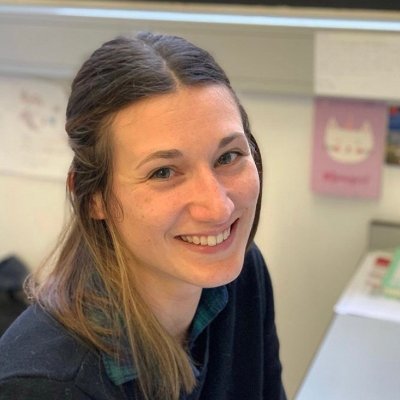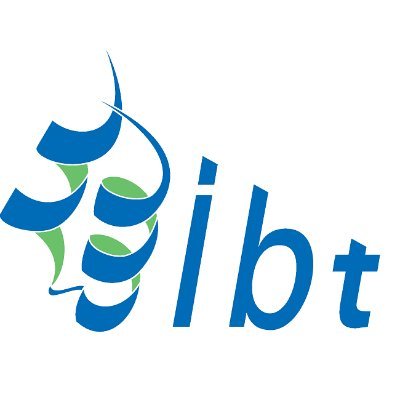
Daniel Žucha
@DanielZucha
Followers
148
Following
1K
Media
20
Statuses
253
Spending days with Neurobiology | Bioinformatics | Human nature. Don't believe your ideas, test them. 🧠⚡️PhD student in @labgenex, mentored by @LukasValihrach
Prague, Czech Republic
Joined March 2019
🧠 New Research on #stroke ! You: "I wonder... is there a map of brain's cellular defense to ischemia?" #SciTwitter: “Hey neuroscientist, wake up! New Spatiotemporal transcriptomic map of ischemic glial cell response in @PNAS just dropped!" https://t.co/OHD7aJTVjH A thread🧵.
pnas.org
The role of nonneuronal cells in the resolution of cerebral ischemia remains to be fully understood. To decode key molecular and cellular processes...
4
13
44
⚡️Exciting Breakthrough in Progressive Multiple Sclerosis⚡️ Much humbled to contribute to this exciting project from @Pluchinolab . Analysing 200+ sections from 50+ patients, showcases the power of #spatialtranscriptomics in rare cell localization. 🧠 @IBT_CAS @LukasValihrach
Proud to see our work out in @NeuroCellPress ! https://t.co/meURUg4Ux6 With Bongsoo Park, Dimitris Tsitsipatis @DanielZucha @LukasValihrach @irina_mohorianu @Pluchinolab @BeermanHSCaging !
1
4
14
🙌 🧠 At any stage of thinking or running a business, I believe it’s so valuable to listen and discuss the different points of view. 🎤 And I greatly appreciate the opportunity to actively participate this time. ➡️ Excited for the next workshops and meetups! Thanks!
🚀 Have you ever wondered what it takes to launch a biotech startup – and whether it might be the right path for you? 🚀 Join us for the workshop co-organised with the @IBT_CAS and https://t.co/C0K6pBEnRl at @BIOCEV_science. 🤩 💡 Four inspiring scientists – startup founders –
0
2
4
🎉 Happy announcement! Proud to supervised and funded with a clear vision. Excited to see more #spatialtranscriptomics research done to better understand #stroke. 🧠 Also, congratulations to all the #GACR awardees! 👏
Great success! 🎉 Thrilled to see #GACR supporting these exciting research projects and honored to be among the awardees. 🚀 Congrats to all applicants! 👏
2
0
3
Great success! 🎉 Thrilled to see #GACR supporting these exciting research projects and honored to be among the awardees. 🚀 Congrats to all applicants! 👏
🥳Získali jsme podporu @GACR_CZ pro 8 nových výzkumných projektů! Těšíme se na nové výzvy a řešitelům gratulujeme!🚀 @PavlinkovaLab @KomrskovaLab @LukasValihrach @jan_dohnalek @Akademie_ved_CR
1
1
13
Impactful, inspirative and well presented! Well done 👏
Congratulations to the whole team for this amazing tour de force work on spatial multi-omics in AD. https://t.co/tR6OB4uGvB
0
0
1
Congratulations to the whole team for this amazing tour de force work on spatial multi-omics in AD. https://t.co/tR6OB4uGvB
nature.com
Nature Genetics - Spatial and single-nucleus analyses in human postmortem Alzheimer’s disease (AD) brain tissues at early and late stages from individuals with and without Down syndrome, as...
3
12
31
💭 Por Fin. And also many thanks to you, dear reader, for making it this far. Looking forward to your thoughts and feedback. And in case you wish to see more for yourself, you can interactively explore our ST data yourself! https://t.co/3MXutjjLuA Cheers!
0
0
1
🤝 Acknowledgements. My gratitude also extends to colleagues and facilities at @BIOCEV_science providing the important support and infrastructure, as well as funding agencies @GACR, @CzechAcademy, @IBT_CAS, and @VSCHT for making this #spatialtranscriptomics research possible.
1
0
0
🙌 Big Thanks to Co-Authors. I sincerely thank to all co-authors for their indispensable work. And special thanks to @Kirdajka for all the well-executed surgeries and IHC validations; and to the most supportive supervisor that walks the Earth @LukasValihrach.
1
0
0
🔮 The Future. Patient samples? Extended time points? Better #spatialtranscriptomics resolution? All this and more is critical for more complete understanding of stroke response, aiming to simplify the search for better therapeutic treatments.
1
0
0
📚 𝐒𝐮𝐦𝐦𝐚𝐫𝐲. We present a comprehensive transcriptomic study focused on the role of glial cells in stroke pathobiology, comprehensively mapping their acute response and role in the formation of the glial scar.
1
0
1
🧭 Resourceful Exploration. To robustify our replicate count, we re-applied our analyses to public ST datasets, with the result of recapitulating the spatial and temporal patterns.
1
0
1
📌 Oligodendrocytes In The Spotlight. OL diversity captivated us the most. Extended data and protein validations converged on three reactive subtypes, common in their potential to reduce neuroinflammation, but different in localization, and imunogenic and metabolic gene profiles.
1
0
2
🧙 The Rise of Reactivity. With SC data, not only we reproduced the brain-region specific glial subtypes, but also documented the diversity of reactive glial states and their relatedness to slowly progressing neurodegenerative contexts.
1
0
2
🎙️ Can They Hear You? Using location-aware ligand-receptor algorithm, we found that within the wealth of inter-cellular avenues, Apoe-Trem2 dwarfed others by its 100-fold increase over time. Given its multifaceted role, we highlighted its key contribution to glial scar formation.
1
0
2
🏯 Glial Prominence. Over the 7-day period, each of major glia types - astrocytes, microglia, oligodendrocytes - contributed to forming the lesion-isolating glial scar. Early on, microglia colocalized with several chemokines; overtime all three correlated with reactivity markers.
1
0
2
📊 Processes and Cells Perturbed. Inflammation and cell death in the lesion core, with glial scar formation at the periphery, involved various cell types. Neuron loss was offset by time- and space-specific increases in glia, immune cells, fibroblasts and vascular cells.
1
0
2
📉 Severely Disrupted. After MCAO, cortical expression was severely impacted. Over time, recovery signs emerged with increased gene count and reduced lesion size. However, the overlap of lesional overexpressed genes revealed minimal direct reversion to the uninjured cortex state.
1
0
1
🗺️ Experimental Overview. To create a map of cellular response, we performed spatial (ST) and single-cell (SC) transcriptomics on mouse brains to decode key transcriptional programs occurring during the first 7 days following an ischemic stroke injury.
1
0
2






